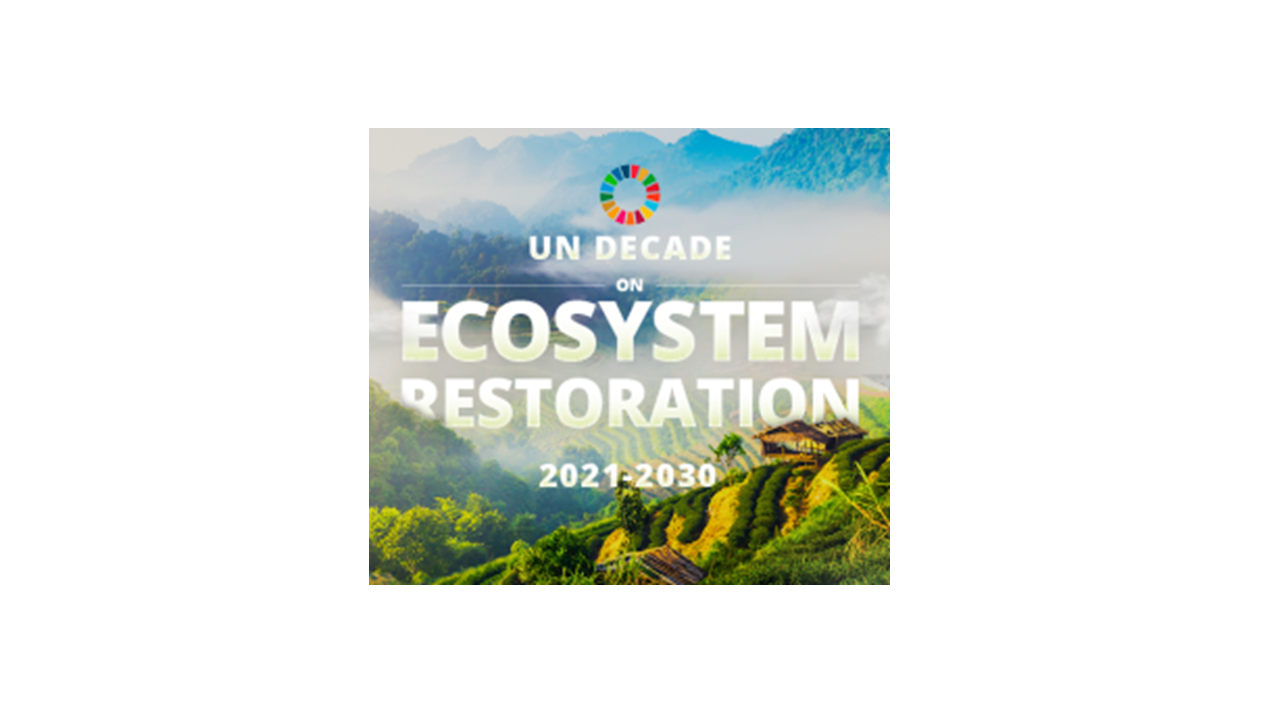The United Nations Decade for Ecosystem Restoration puts the spotlight on preventing, halting, and reversing the degradation of ecosystems worldwide. Ecosystem restoration means assisting in the recovery of ecosystems that have been degraded or destroyed, as well as conserving the ecosystems that are still intact. Evidence overwhelmingly suggests that this focus is pivotal to help fight poverty and climate change and to save us from extinction. But to succeed, the private sector needs to be at the forefront of this fight.
Why focus on ecosystem restoration now?
Our development story so far has been focused on economic growth, putting immense pressure on different ecosystems, and making it challenging to achieve the goal of keeping global temperature increases to less than 1.5 degree Celsius by 2050. There has never been a more urgent need to reverse this process of degradation.
In doing this, the private sector has an active role to play. Farmlands which cover more than one-third of the Earth’s land surface are one of the most vital ecosystems to sustain human-kind. Through our work in India, Pakistan, Tanzania, and Brazil, we have already seen how private sector can create impact for smallholder farming context by engaging at various levels such as sourcing, finance and by supporting research and development.
Many damaging practices such as industrial farming practices have led to pollution of waterbodies, deterioration of soil health, loss of biodiversity and destruction of peatlands which are an important reservoir of carbon .This has been driven primarily by the demand created by the private sector.
Now the sector has an opportunity to shift investment and business practice towards a different approach. As estimates from giants such as Unilever say, there are losses from inaction, including some €300 million per year as worsening water scarcity and declining agricultural productivity lead to higher food costs. Landscape approaches make for an urgent, compelling business case. A production landscape-based approach is a unique opportunity to restore degraded farmland ecosystem, improve livelihoods of the local community, build resilience to fight climate change, reduce supply chain risks and contribute positively to the planet and community by promoting responsible sourcing, empowering local communities, and leveraging investments. It breaks the silos of a specific commodity or a sector and encourages its partners to focus on a geography instead.
What is the business proposition for landscape partnerships?
With a multi-stakeholder partnership at the landscape level, farmers and the local community, civil society organisations and SMEs have greater power to define the shared goals for the region. Most of the landscape-based movements have been so far led by civil society and local communities. Out of 428 multi-stakeholder landscape partnerships documented around the world in studies conducted between 2013 to 2015, only a quarter involved private companies. While the involvement of local community and civil society is critical and is the hallmark of these multi-stakeholder partnerships, a market-based model with active involvement of the private sector is important for long-term sustainability. These partnerships also create a good platform to channel private and public funding collaboratively in the right direction and takes a systemic approach in addressing issues such as biodiversity, water, human rights, through bottom-up collaborative planning in the region. Farmers who are the true custodians of the land and primarily responsible for sustainable production get a seat at the table and can contribute to the action agenda for building the supporting infrastructure for sustainable production.
For companies, while it is critical to look at their supply chain to maintain competitive advantage, by supporting landscapes they get a licence to operate and improve their reputation in the local community. Landscape approaches also offer better traceability of raw materials, can reduce potential operational disruptions due to climate change, resource scarcity and community risk in the future and help improve their regulatory standing. Companies can have different models of engagement with landscapes. They can source sustainable produce from the landscape directly or through its suppliers, for example IDH’s SourceUp is an online platform that links Agri-commodity companies with multi-stakeholder initiatives in producing regions (Compacts) . Companies can also contribute to funds investing in landscape partnerships, for example, fashion label Chanel has recently committed $25 million as the anchor investment in the Landscape Resilience Fund which will raise $100 million by 2025 to support sustainable agriculture, protect forests, and to support smallholder farmers in developing countries . Companies that want to be deeply involved can directly invest in projects supported through the landscape partnerships, provide supply chain finance, or join the governance of the multi-stakeholder partnerships in the sourcing regions and influencing suppliers and peers to join, for example, Nestle, recently announced investments in forest landscapes in South-east Asia as part of its forest policy strategy.
In the long-term, companies who support landscapes will also achieve better performance on environmental, social and governance metrics to attract more investments. Aspects such as environmental footprint, water usage and community development efforts are increasingly becoming critical for investors in assessing their portfolios. An improved value-proposition for its customers and shareholders is an obvious by-product of supporting landscape approaches which can create opportunity to get a price premium. Many progressive businesses have already started adopting a landscape approach as part of their sourcing strategy and companies who are first-movers will be better positioned to gain from increasing global demand and contribute as a force for good.
This post was originally published in the Times of India here.
